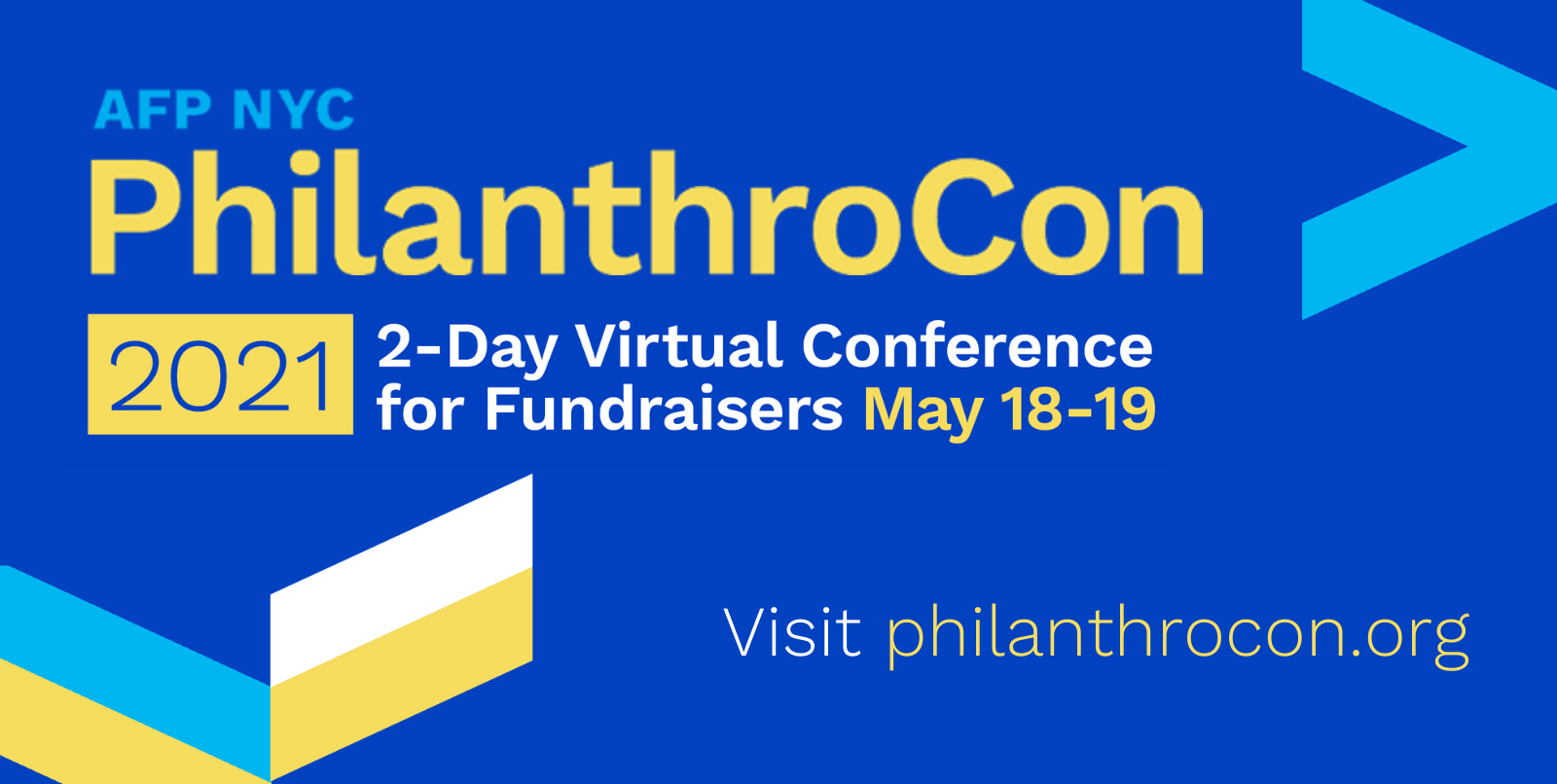Conference Co-chair Comes Away With Ideas to Share

Transformed for virtual attendance and rebranded from Fundraising Day New York, AFP New York City Chapter’s PhilanthroCon 2021 spanned two days and provided insights, networking and collaboration. The conference hosted various session tracks — from marketing to major gifts and planned giving to direct response.
Fundraising Day in New York (FRDNY), the nation’s largest conference on philanthropy, has always been a favorite of mine. And as a co-chair of the direct response track for the second year in a row, I was inspired by the two sessions on May 19. Here are my top take-aways:
From 20+ Direct Response Tricks to Steal Right Now
Speakers: Patrick McVean of Production Solutions; Andrew Olsen of Altus Marketing
This fast-paced session ran the gamut from production tips to data innovations, giving attendees exciting ideas to take back to the office and put into practice.
- Always test! A/B testing can yield surprising results, so we encourage organizations to always test new strategies, whether they’re tried and true or totally out of the box.
- Donors love to tell you about themselves, so let them! Survey responders have higher conversion rates, and their answers can lead to future giving opportunities, so send a donor survey when they first sign up online or give their first gift.
- Small asks can lead to big payoffs. When tested in a mobile campaign, the phrase “Even $3 can make a difference” improved conversions by almost 70% and — shockingly — didn’t reduce the average gift.
- Don’t forget DAF! Giving through donor-advised funds is on the rise, and these committed and wealthy donors are likely already on your donor file. To make it easy for them, include the full legal name of your organization and your tax ID number on reply forms.
- Have you been trying to spice up your e-newsletters? Consider bringing the spice level down instead, by testing a photo-less, text-only newsletter. This can lift response, especially among high-value donor groups.
From Onward and Upward: Insights for Mid-Level Programs
Speakers: Jessica Chapman of The ALS Association; Tiffany Wollin and Kim Brisse of Doctors Without Borders USA
Skippered by three mid-level giving experts, this conversational session gave attendees deep insight into two very different — but successful — mid-level programs.
- Defining mid-level is different for everyone. Consider your full donor file and set the parameters based on what’s right for your organization — whether it’s based on one-time gift thresholds or cumulative giving over 12 or 24 months.
- Make the case. To get the resources your mid-level program needs to succeed, present a case for support to your organization’s leadership. Focus on data-driven results, proven return on investment and benchmarks from peer organizations.
- Give mid-level donors a warm welcome. Consider creating a special welcome email journey and mail package series just for these extraordinary donors.
- How many touchpoints per year is right for you? This question sparked a lively discussion during the Q+A. Whether your organization sends 3, 6 or 12 mailings to mid-level donors each year, it’s important to test each new mailing and carefully analyze the performance of adjacent campaigns to see the impact on overall results.
- Be available and personal. Include a dedicated contact name in your mailings, along with a direct phone line.
- Picking up the phone is never out of fashion. Mid-level donors love hearing from you, so consider adding regular calls to your list — from initial welcome calls to gift thank you calls (and extra ones at year-end!)
- Ask questions and listen carefully. When talking with donors, say “May I ask what inspired your gift?” The answer can provide insight into their personal connection to your cause, or leads for other fundraising opportunities like planned giving.
- Mid-level mail doesn’t have to break the bank. In addition to some unique packages, you can version existing direct mail packages for this higher-value audience to take advantage of economies of scale. And for special touches, adding a buckslip or mailing a postcard is a cost-effective way to get results.
- Downsize your annual report. For mid-level donors, consider printing a smaller, more cost-effective impact report that highlights the difference their generosity made over the past year.
- Move donors up. Wealth screening is a fantastic tool for identifying major donor prospects. In addition, donors identify themselves as potential majors when they make a gift through securities, an investment account, a donor-advised fund (DAF) or qualified charitable distribution (QCD).
Having absorbed so much information from PhilanthroCon 2021, I can only look forward to what the conference will bring in 2022!